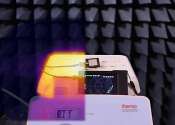Ultrasound can enable faster, more sustainable battery recycling
Known by expectant parents as the technology that enables them to see their child for the first time, ultrasound can be used at extremely low frequencies to serve an entirely different purpose. Researchers at KTH Royal Institute ...
Oct 13, 2021
0
296









